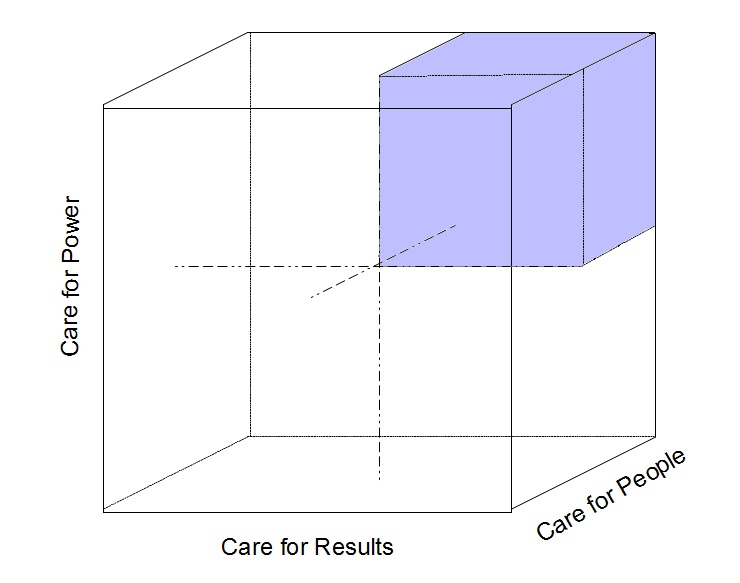Leadership

QoTD
Power And Leadership Effectiveness
Udayakumar Nalinasekaren
Dec 21, 2010
 The usual leadership training material talks about two continuum when discussing leadership effectiveness. These are namely the leader's care for results and care for people. A leader should of course be balanced on these two continuum to be effective. Most of the published material are usually silent about the leader's ability to gain more power. I think this forms the third and very important continuum in a leader's journey to peak performance. Research says that only people who acquired power became more effective leaders in the long run.
The usual leadership training material talks about two continuum when discussing leadership effectiveness. These are namely the leader's care for results and care for people. A leader should of course be balanced on these two continuum to be effective. Most of the published material are usually silent about the leader's ability to gain more power. I think this forms the third and very important continuum in a leader's journey to peak performance. Research says that only people who acquired power became more effective leaders in the long run.

Most people think of acquiring power as a negative thing. Power is simply the ability to influence a system and has very positive meaning. However, simple acts like creating awareness for success of certain changes brought in by the leader or the effectiveness of decisions made by him or her can be perceived as bragging by the community being led. This is true especially in young leaders who do not yet have a brand. Also, if a senior leader in a system practices negative acts like misuse of power for promotion of selfish interests (for example nepotism or suppressing good ideas or initiatives for the fear of losing position), and the larger system does not correct it in time, the perception of power given to leadership in that organization becomes negative as people adjust and learn to live around negative power. Argumentative thinking styles also act as strong barriers to powerful ideas in some communities and hence stump potential leaders with those powerful ideas who lack the ability to argue their case well. Thus, the leadership initiative of acquiring power has strong entry barriers.
Respect is a measure of power. However, there is a strong difference between commanding respect and demanding respect. I don't want to argue that demanding respect is negative. It has to be done based on context. However, a leader who commands respect largely by the quality of actions and value system he or she practices acquires power much faster than one who exercises position to get things done. There is a lot of 'give' to be done initially before 'getting' power.
Power in a command and control hierarchy is inversly proportional to the distance from the top of the hierarchy. It is usually perceived that power is handed over from the top. This model is flawed. Usually it is the bottom of the pyramid which by willingly rallying around the thoughts and deeds of a leader provide much of that power. Think of the power that Mahatma Gandhi acquired. He was such a simple non threatening personality and yet the Brit's were shit scared of him. It was because he learnt to represent the collective feelings and wants of Indians so very effectively using a positive value system of non-violence.
My Artwork
Coming soon...Latest Blog Posts
Coming Soon
Archives
Search



